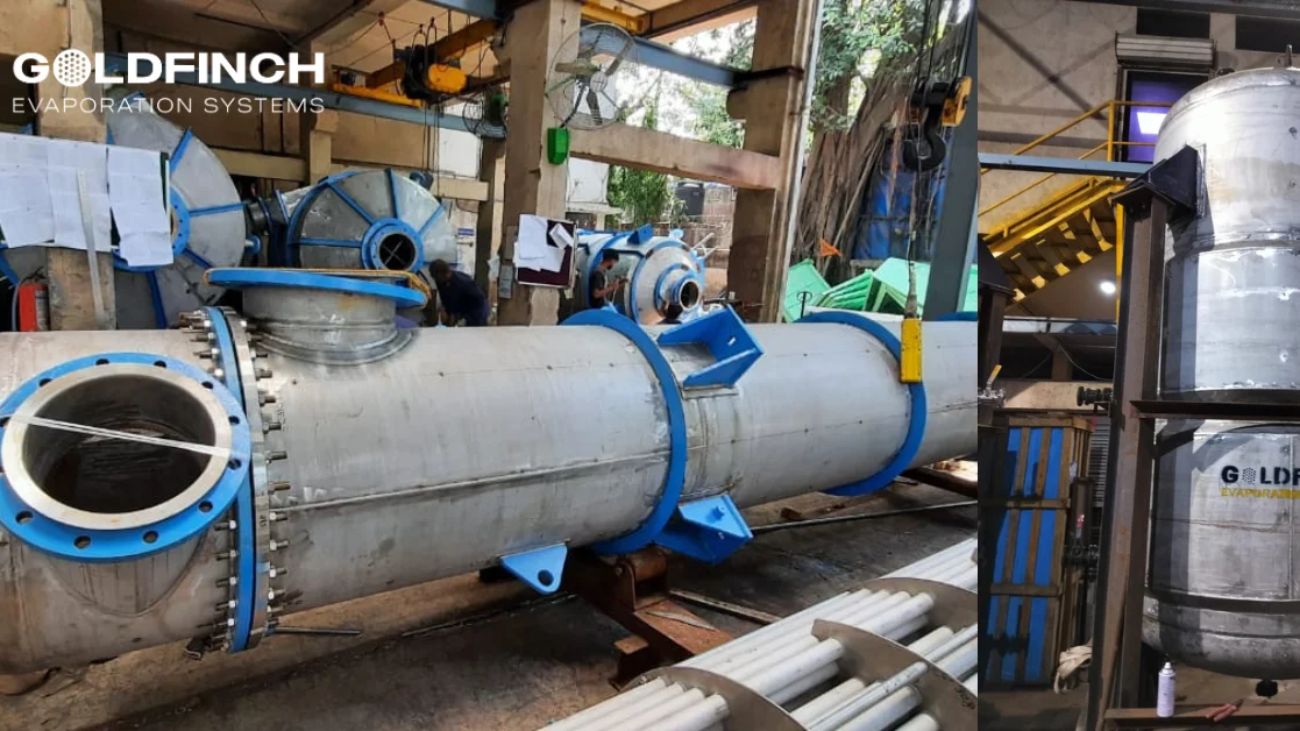In terms of industrial processes, efficiency and cost savings are the most important criteria for operational efficiency. The multiple-effect evaporator (MEE) is one of the simplest but highly effective solutions for optimizing energy consumption and reducing waste. Because it is widely used in several industries, such as pharmaceuticals, chemicals, food processing, and wastewater treatment, this blog will look into how these systems work, their advantages, and their price effectiveness.
What does Multiple Affect Evaporator mean?
Multi-effect evaporators are systems designed to remove water from a solution effectively and efficiently, applying more effects or stages. This method involves energy savings compared with single-effect evaporators and is, therefore, the best option for industries that are concerned with either sustainability or cost-effectiveness.
How Does a Multiple Effect Evaporator Function?
The MEE plant uses steam to heat the feed solution and evaporate the water content. In each effect, the vapor produced thereby works as a heating medium in the incoming effect for energy-saving purposes. This cascading continues for several stages, which is advantageous in terms of efficiency and overall cost.
Essential Components of a Multiple Effect Evaporator
- Feed Tank: Hold the solution before entering the evaporator.
- Heating Chambers: Where steam transfers heat to the liquid.
- Evaporator Chambers: Facilitate the vaporization process.
- Condensers: Convert back any excess steam into a liquid for reuse.
- Vacuum System: Maintains optimal pressure conditions.
The Principle Behind Multiple-Effect Evaporators
The fundamental principle of an MEE is based on latent heat reuse. An MEE gains maximum thermal efficiency while requiring very little external energy input by using the vapor generated in one stage to heat the next stage. This design considerably reduces both fuel and operational costs.
Types of Feeding in a Multiple-Effect Evaporator
- Forward Feed: Ideal for temperature-sensitive materials.
- Backward Feed: Best for high-viscosity solutions.
- Mixed Feed: A combination of both methods for optimized performance.
The Multi-Effect Evaporators’ Merits Over the Single-Effect Evaporators
- Economical in Energy: Saving steam by avoiding to reuse of heating.
- Reduced Operating Costs: Less fuel and water needed.
- Higher Production Capacity: This can run continuously while improving throughput.
- Environmental Advantages: Produces less of a carbon footprint as energy waste is therefore reduced.
Cost of a Multiple Effect Evaporator
The cost of an MEE system varies based on:
- Some effects (more effects lead to greater savings but higher initial costs).
- Industry requirements (food, chemical, or wastewater applications).
- Customization options (materials, automation, and efficiency upgrades).
Multiple-Effect Evaporator Capacity
The MEEs come in different capacities, from small-scale installations for laboratory use to large-scale industrial systems that can handle thousands of liters per hour.
The Efficiency Calculation of Multiple-Effect Evaporator
Efficiency is calculated with:
An efficiently designed system can achieve well over 80% efficiency, resulting in considerable savings of operating costs.
Improving Evaporator Efficiency
To improve MEE efficiency:
- Feed Temperature Optimization: Preheat the feed to minimize steam consumption.
- High-Performance Heat Exchangers: Enhances heat transfer efficiency.
- The Appropriate Vacuum Level: Boosts evaporation rates.
- Reduce Scaling and Fouling: Ensures consistent performance.
Multiple-Effect Evaporators in India
The country has adopted very fast multiple-effect evaporator systems, especially in ZLD systems and wastewater treatment. Manufacturers are coming up with solutions to make very competitive and efficient MEE solutions as per the industrial need.
Multiple-Effect Evaporator Manufacturing
The primary focus of leading manufacturers is on:
- Selection of advanced materials: alloys and stainless steel resistant to corrosion.
- Integration of automation: smart sensors and monitoring with IoT.
- Individualization in Design: custom-made for the specific needs of the industry.
Conclusion
Essentially, a multiple-effect evaporator does wonders for industries that are up for efficiency improvements and cost reductions. MEEs provide all the significant extra benefits against the classical evaporators, like latent heat reuse, optimized feed systems, and advanced manufacturing techniques. One has to invest in an MEE system for continuous sustainability and savings, alongside enhancing operational efficiency.
To meet constantly changing requirements in the industry, an MEE is a good investment to maximize efficiency and value.


